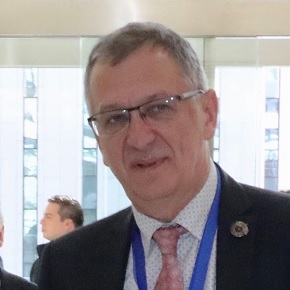 |
||
|
Unit No. 1 at the Belarusian Nuclear Power Plant has been brought to minimum control power Communications Unit of Engineering Division of ROSATOM, PUBLISHED 12.10.2020 11th October 2020 2:26 a.m. Ostrovets, Belarus - Unit No. 1 at the Belarusian Nuclear Power Plant, equipped with the VVER-1200 reactor has been brought to minimum control power (MCP). Minimum control power level is reached when neutron flux is recorded in a reactor working at a level sufficient to sustain a fission chain reaction. Reaching MCP (at a minimal power level of under 1%) is considered as the final stage of the physical start-up procedure. It allows personnel to safely take a required measurements and verify whether the physical characteristics of the reactor core comply with design requirements. In due course specialists will conduct more than 50 physical experiments on the neutronic characteristics of the reactor's first fuel charge, as well as confirm the operational reliability of the reactor's entire monitoring and safety systems. The results of these experiments will be passed on to Belarusian nuclear watchdog Gosatomnadzor, which grants permission for power start-up. If the results are found satisfactory and permission is granted, the unit will then be prepared for power start-up when the reactor power is gradually increased. The Ostrovets-based, 2,400 MW-capacity Belarusian NPP is equipped with two VVER-1200 reactors. The first nuclear power plant in Belarus, it is based on a Gen 3+ Russian design that fully complies with international standards and the safety recommendations of the International Atomic Energy Agency (IAEA). Belarusian NPP Unit 1 became the first unit outside of Russia to be equipped with the newest Russian-designed Gen 3+ reactor technology. Currently, three power units of this type are successfully operating in Russia: two at the Novovoronezh NPP and one at the Leningrad NPP. In August 2020, MCP was reached at Russia's fourth Gen 3+ power unit - Unit 6 of Leningrad NPP. Finland, Hungary, and Bangladesh are just three of numerous countries that have chosen to adopt this technology. Rosatom's international order book currently comprises 36 committed VVER units across 12 markets. Topics: East Europe, Belarus Other news: WANO appoints Robert Gambrill as Director of WANO Atlanta Centre He has formally replaced Russ Brian. The complete MOX-core is planned in 2022. WANO, IAEA, EPRI collaborate to help new nuclear power units to start up safely and on time The white paper is available here (bottom left section to download). |
Hero of the day 
Vladimir Kriventsev: FR21 provides excellent opportunities The International Atomic Energy Agency brings together the fast reactor and related fuel cycle community and countries and the wider public interested in these technologies by organising the International Conference on Fast Reactors and Related Fuel Cycles: Sustainable Clean Energy for the Future or FR21. INTERVIEW
William D. Magwood, IV OPINION
Vyacheslav Kupriyanov, |

